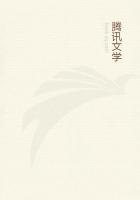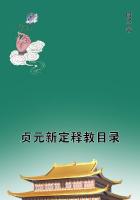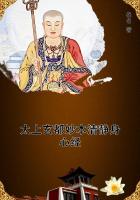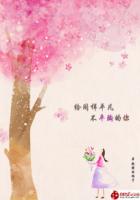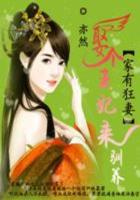Poets and moralists, judging from our English trees and fruits, have thought that small fruits always grew on lofty trees, so that their fall should be harmless to man, while the large ones trailed on the ground. Two of the largest and heaviest fruits known, however, the Brazil-nut fruit (Bertholletia) and Durian, grow on lofty forest trees, from which they fall as soon as they are ripe, and often wound or kill the native inhabitants. From this we may learn two things: first, not to draw general conclusions from a very partial view of nature; and secondly, that trees and fruits, no less than the varied productions of the animal kingdom, do not appear to be organized with exclusive reference to the use and convenience of man.
During my many journeys in Borneo, and especially during my various residences among the Dyaks, I first came to appreciate the admirable qualities of the Bamboo. In those parts of South America which I had previously visited, these gigantic grasses were comparatively scarce; and where found but little used, their place being taken as to one class of uses by the great variety of Palms, and as to another by calabashes and gourds. Almost all tropical countries produce Bamboos, and wherever they are found in abundance the natives apply them to a variety of uses. Their strength, lightness, smoothness, straightness, roundness and hollowness, the facility and regularity with which they can be split, their many different sizes, the varying length of their joints, the ease with which they can be cut and with which holes can be made through them, their hardness outside, their freedom from any pronounced taste or smell, their great abundance, and the rapidity of their growth and increase, are all qualities which render them useful for a hundred different purposes, to serve which other materials would require much more labour and preparation. The Bamboo is one of the most wonderful and most beautiful productions of the tropics, and one of nature's most valuable gifts to uncivilized man.
The Dyak houses are all raised on posts, and are often two or three hundred feet long and forty or fifty wide. The floor is always formed of strips split from large Bamboos, so that each may be nearly flat and about three inches wide, and these are firmly tied down with rattan to the joists beneath. When well made, this is a delightful floor to walk upon barefooted, the rounded surfaces of the bamboo being very smooth and agreeable to the feet, while at the same time affording a firm hold. But, what is more important, they form with a mat over them an excellent bed, the elasticity of the Bamboo and its rounded surface being far superior to a more rigid and a flatter floor. Here we at once find a use for Bamboo which cannot be supplied so well by another material without a vast amount of labour--palms and other substitutes requiring much cutting and smoothing, and not being equally good when finished. When, however, a flat, close floor is required, excellent boards are made by splitting open large Bamboos on one side only, and flattening them out so as to form slabs eighteen inches wide and six feet long, with which some Dyaks floor their houses. These with constant rubbing of the feet and the smoke of years become dark and polished, like walnut or old oak, so that their real material can hardly be recognised.
What labour is here saved to a savage whose only tools are an axe and a knife, and who, if he wants boards, must hew them out of the solid trunk of a tree, and must give days and weeks of labour to obtain a surface as smooth and beautiful as the Bamboo thus treated affords him. Again, if a temporary house is wanted, either by the native in his plantation or by the traveller in the forest, nothing is so convenient as the Bamboo, with which a house can be constructed with a quarter of the labour and time than if other materials are used.
As I have already mentioned, the Hill Dyaks in the interior of Sarawak make paths for long distances from village to village and to their cultivated grounds, in the course of which they have to cross many gullies and ravines, and even rivers; or sometimes, to avoid a long circuit, to carry the path along the face of a precipice. In all these cases the bridges they construct are of Bamboo, and so admirably adapted is the material for this purpose, that it seems doubtful whether they ever would have attempted such works if they had not possessed it. The Dyak bridge is simple but well designed. It consists merely of stout Bamboos crossing each other at the road-way like the letter X, and rising a few feet above it. At the crossing they are firmly bound together, and to a large Bamboo which lays upon them and forms the only pathway, with a slender and often very shaky one to serve as a handrail. When a river is to be crossed, an overhanging tree is chosen from which the bridge is partly suspended and partly supported by diagonal struts from the banks, so as to avoid placing posts in the stream itself, which would be liable to be carried away by floods. In carrying a path along the face of a precipice, trees and roots are made use of for suspension; struts arise from suitable notches or crevices in the rocks, and if these are not sufficient, immense Bamboos fifty or sixty feet long are fixed on the banks or on the branch of a tree below. These bridges are traversed daily by men and women carrying heavy loads, so that any insecurity is soon discovered, and, as the materials are close at hand, immediately repaired.
When a path goes over very steep ground, and becomes slippery in very wet or very dry weather, the Bamboo is used in another way.
Pieces are cut about a yard long, and opposite notches being made at each end, holes are formed through which pegs are driven, and firm and convenient steps are thus formed with the greatest ease and celerity. It is true that much of this will decay in one or two seasons, but it can be so quickly replaced as to make it more economical than using a harder and more durable wood.

